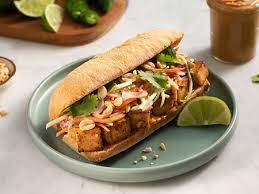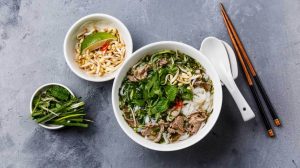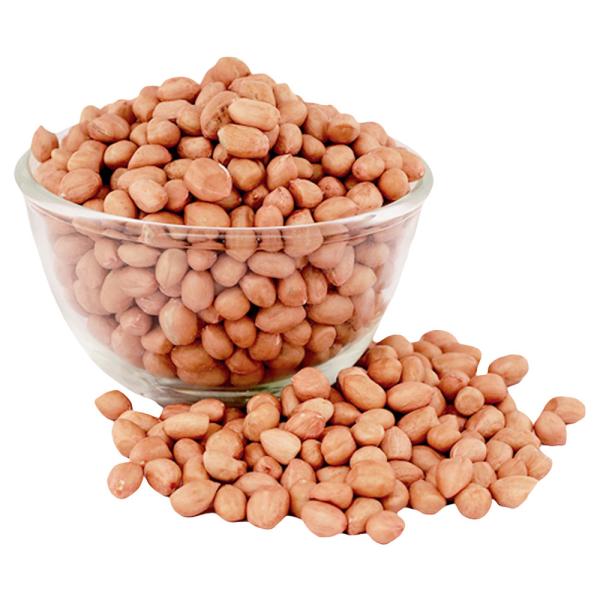Are Peanuts Used in Vietnamese Food?

Vietnamese food is delectable and is regarded as one of the healthiest in the world. But what if you’re allergic to peanuts? If so, you’re undoubtedly wondering if Vietnamese food contains peanuts.
Many dishes in traditional Vietnamese cuisine include peanuts as a garnish or topping. Furthermore, peanut oil is frequently used in cooking. However, several well-known dishes, such as pho or banh mi, do not often contain peanuts.
However, this merely touches the surface of Vietnamese cuisine.
As previously stated, peanuts are used as a garnish or topping in various meals, and some may be less visible.
Are there nuts in Vietnamese food?
Yes.
Nuts and nut oils can be used as a garnish in cooking and sauces, and condiments.
Not only are nuts standard in Vietnam, but Vietnamese people are also unaware of food allergies. As a result, while visiting Vietnam, this might be a problem.
If you are going to Vietnam, you should have some cards that indicate the nature of your allergy. Make it abundantly apparent that you cannot eat peanuts and that doing so will result in your death.
If you are not traveling but visiting a favorite local restaurant, the proprietors are likely to be more sensitive to allergies. They are also likely aware of the risks associated with peanut allergy.
Your best bet, though, would be to prepare it yourself. You will then have total control over the materials. Your buddy can be confident that there are no peanuts in the meal and that there will be no cross-contamination.
Peanut-free dishes such as banh mi and pho are pretty simple to prepare. They also don’t have to be overly time-consuming.
Does banh mi have peanuts?

No.
The Vietnamese term for bread is banh mi. It’s a type of bread that’s comparable to a hoagie bun or a petite baguette.
During the French conquest of Vietnam in the 17th century, it was introduced as a baguette.
France, in reality, left more than simply baguettes. Asparagus and potatoes were also adopted into Vietnamese cuisine.
Baguettes are frequently split lengthwise and filled with sandwich components such as meat and bread.
A traditional banh mi sandwich consists of pork, cucumber, pickled carrots, and pickled radishes. Condiments are often made up of chili and mayonnaise.
However, banh mi may also be filled with ice cream! Sandwiches are eaten for breakfast or as a snack in Vietnam.
Although it is not traditionally made with peanuts, the banh mi filling might be fried in peanut oil or topped with a peanut sauce.
The pig filling in this New York Times recipe for banh mi is cooked in peanut or vegetable oil. You can be confident that your banh mi will be peanut-free because you made it at home.
While Vietnamese cuisine shares certain similarities with French cuisine, it is more akin to Chinese cuisine. It uses ingredients and flavors that are incredibly similar to Chinese food, such as:
- As a basis, use rice or noodles.
- There isn’t much dairy.
- Fresh ginger.
- Chipotle sauce.
Does Pho contain peanuts?

Pho is a Vietnamese noodle soup. It generally includes some form of protein, such as chicken, steak, pig, or shrimp.
Typically, pho does not contain peanuts. However, as a garnish, peanuts are occasionally sprinkled on top of pho. Most restaurants, however, offer pho garnish on a plate beside the bowl of soup. It’s also conceivable that the meat was cooked in peanut oil.
However, eating pho with a peanut allergy is typically not a problem. Just make sure they don’t include the peanut garnish or utilize peanut ingredients in the cooking, or traditional pho is composed of thin rice noodles and a broth made of beef stock and different seasonings.
If you are allergic to anything, always check with the chef and take the required precautions.
Cross-contamination in the kitchen is expected due to the significant usage of peanuts in Vietnamese cuisine. Unless you have a strong relationship with your favorite Vietnamese restaurant, you better prepare pho at home.
Do the Vietnamese consume a lot of peanuts?

Peanuts in general, are often utilized in Vietnamese cuisine and sauces. Nuts such as peanuts and cashew nuts are frequently used as decorations even when not cooking.
Peanuts are also a tasty snack when cooked and mildly salted.
If you wish to offer Vietnamese food to your friends and family, but they are allergic to peanuts, you can host a dinner party where you prepare the meal. This way, your buddy may be confident that they are having peanut-free meals.
Fortunately, there are numerous traditional Vietnamese food dishes that you may create at home.
Traditional Vietnamese cuisine comprises fresh ingredients, few fried meals, and light elements such as rice noodles, basil leaves, bean sprouts, and an abundance of fresh vegetables. It is thought to be incredibly healthful and employs ingredients that are essential and readily available.
Curry is another cuisine that may contain peanuts or peanut oil. Curry isn’t simply a single ingredient; it’s a meal made up of a variety of fresh spices.
And, while each Asian country has its form of curry, they are usually rather distinct.
How did peanuts become a staple in Vietnamese cooking?
Peanuts are farmed in seven different regions of China, including South China. Given that South China borders Vietnam, peanuts were most likely transported from China.
However, peanuts were found in Brazil by European travelers as early as 1500 B.C. The peanuts were brought back to Spain by Portuguese and Spanish explorers, who subsequently sold them to traders and explorers who transported them to Asia.
Vietnam was considered a Chinese province for almost a thousand years, beginning from 111 BCE. As a result, Chinese food has greatly affected Vietnamese cuisine. Their usage of chopsticks and the wok is also distinctive.
While there are Chinese influences, Vietnamese food has evolved in several ways. Many meals resemble Chinese cuisines, yet Vietnamese food is thought to be considerably healthier than Chinese food.
They don’t use nearly as much soy sauce instead of flavoring foods with fish sauce. They also utilize more fresh veggies and fewer fried items in their cuisine.











